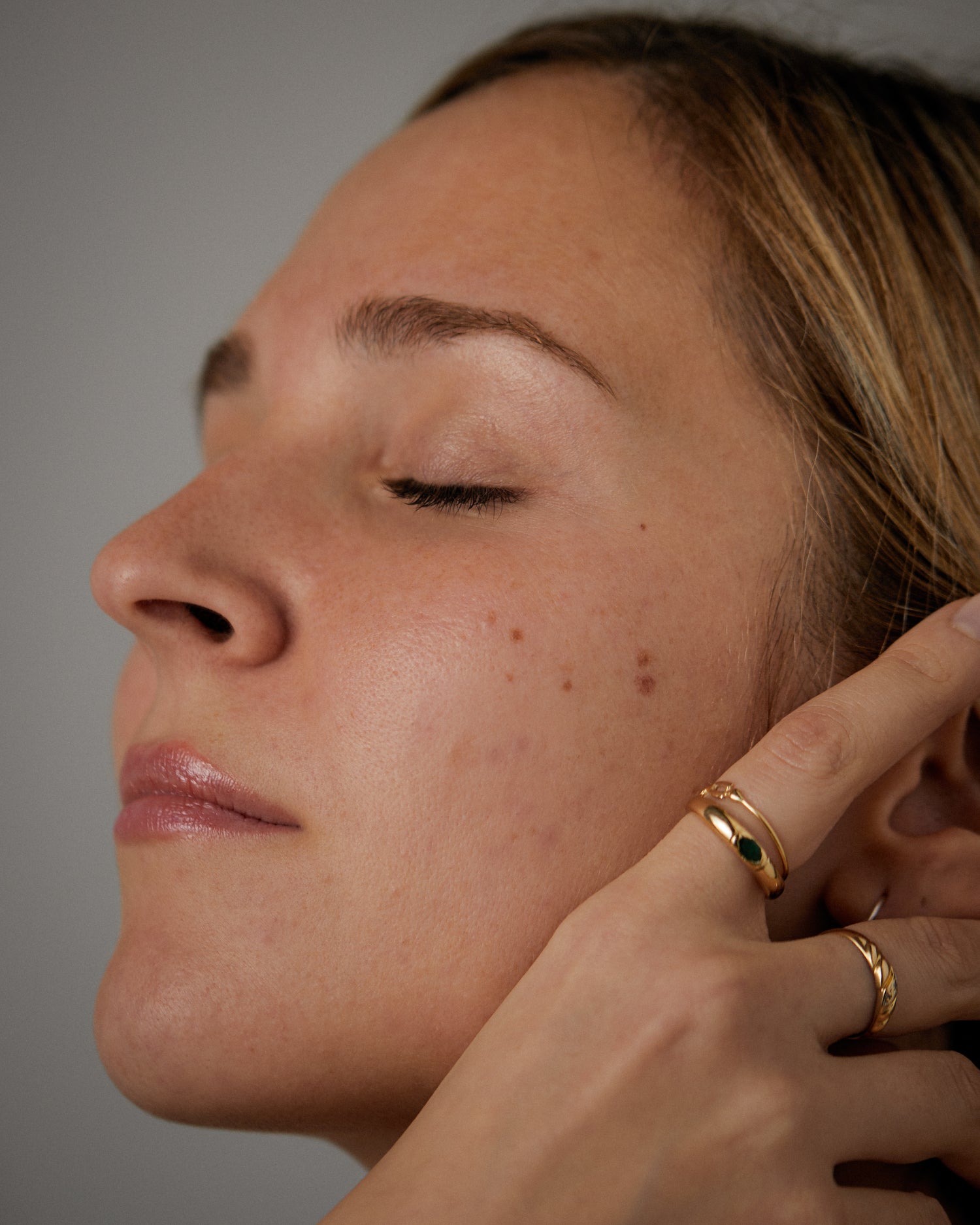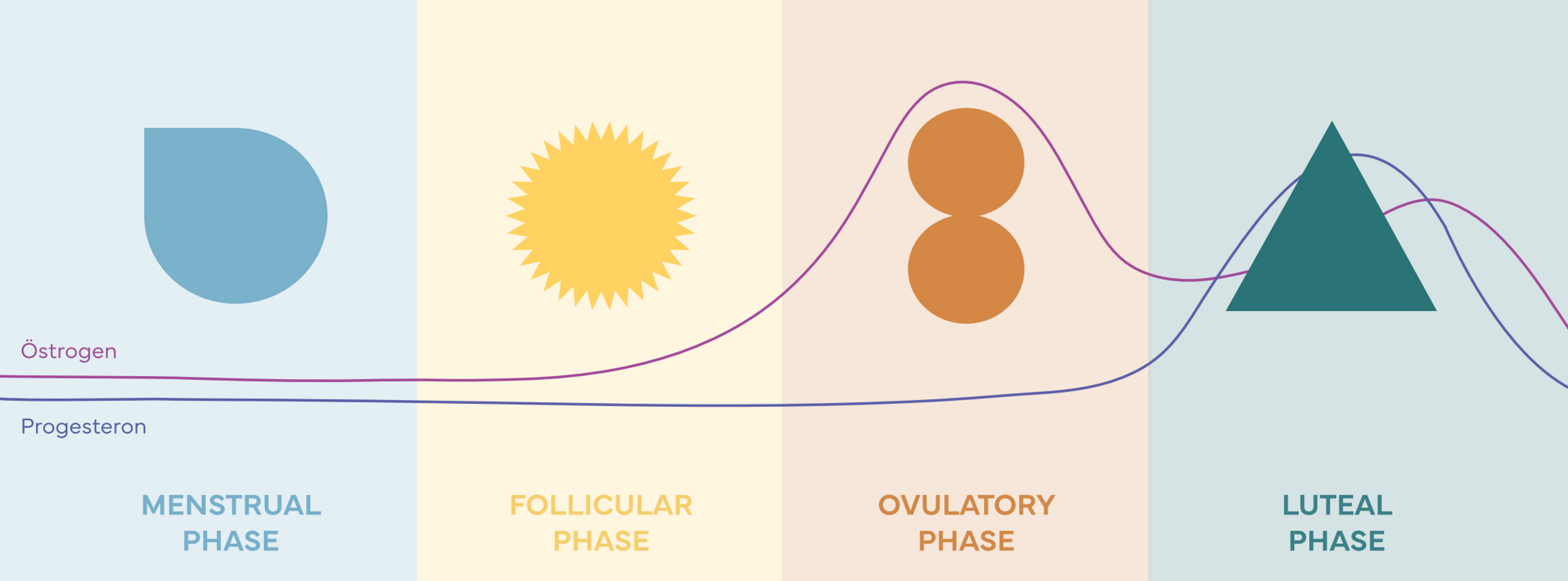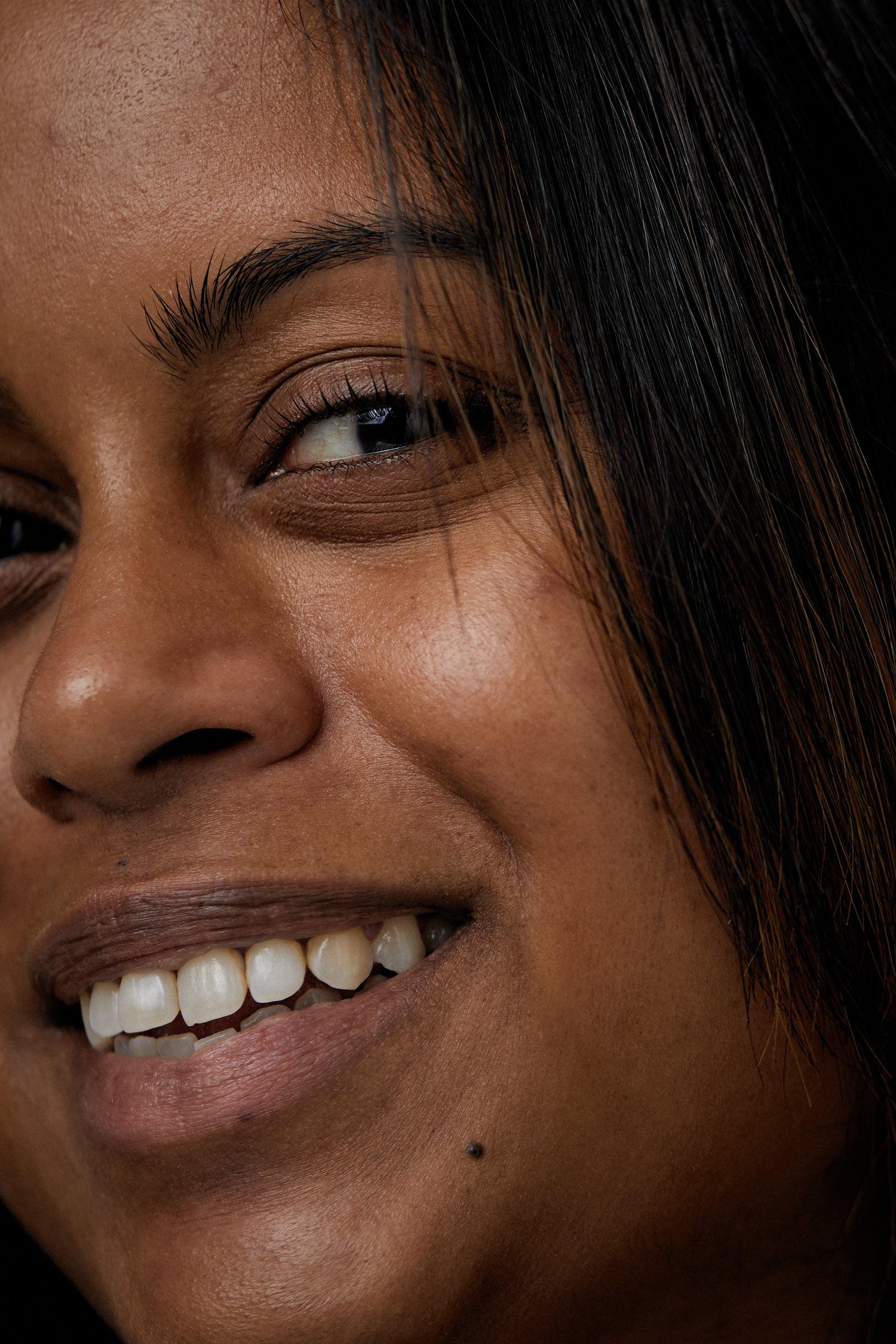
The menstrual cycle briefly explained
The menstrual cycle, often called "cycle" for short, refers to the periodic sequence of hormonal changes that occur primarily in the ovary and uterus. This creates favorable conditions for fertilization and possible pregnancy. On average, the cycle lasts 28 days, but deviations can also occur. Each person is individual and so is each cycle. During the cycle, the body goes through four different phases: menstruation, follicular phase, ovulation and luteal phase. These four phases are caused by different concentrations of your sex hormones (including progesterone, estrogen, luteinizing hormone, follicle-stimulating hormone).
Your cycle controls many processes in your body through fluctuating hormones. Various events such as stress or lifestyle changes can have an influence on the different phases. The female* cycle is therefore a powerful tool that can tell you a lot about your health. It makes sense for you to learn to recognize and understand the signs and signals of your body. A first essential step for this is to document your cycle, the respective characteristics as well as possibly other events influencing the cycle (e.g. stress, medication, diseases etc.).
Every woman* and her cycle is unique. The individual phases can vary in length. Time specifications are therefore only to be understood as guidelines.
The list of individual cycle phases at the top of the page refers to the natural menstrual cycle. If you are under hormonal treatment or take hormonal contraceptives (e.g. the pill), your monthly cycle is usually influenced by this and may show significant deviations.

Your menstrual cycle & its phases
Please click on the respective phase to get more information
Collapsible content
First phase: MENSTRUATION
From the start of menstruation day ~ 1–5 of your cycle.
The first phase begins with the onset of menstruation and can last from three to five days. In the days just before the start of and during menstruation, your hormones (estrogen and progesterone) reach their lowest level. During this time you may feel low in energy, emotional and vulnerable. On the other hand, pain-relieving hormones such as oxytocin and endorphin are present in higher levels. Thus, feelings of happiness can also occur during this phase, however.
Basal body temperature:
Your body temperature is in the low normal range (about 36.5°C).
Your skin:
Low progesterone levels result in a decrease in oil production, which can make your skin look dry and sallow. Do's: Hyaluronic acid, glycerin and aloe vera.
Tips for You:
During this phase, you should rest as much as possible and think about yourself and your needs. Even if you feel full of energy, we recommend you to slow down your life for a few days. Endurance and weight training are not recommended during this time, as they can increase bleeding and cause pain. Instead, try meditation, yoga or long but quiet walks in the fresh air - self-care is the best care. If you recharge your batteries well now, you can be much more balanced and productive.
Second phase: FOLLICULAR PHASE
Day ~ 6–12 of your cycle
The lining of the uterus, which was shed during menstruation, rebuilds. The trigger for this is the rising estrogen level, which triggers follicle production (these contain maturing ovums) in the ovaries. One of these follicles subsequently matures further and is prepared by the uterus for possible fertilization. Due to the release of neurotransmitters such as dopamine and serotonin, your energy level and sense of well-being usually increases and your skin takes on a natural "glow".
Basal body temperature:
Your body temperature stays in the low normal range (about 36.5°C) until ovulation.
Your skin:
Estrogen levels increase, which results in a boost in collagen production, leading to increased moisture retention in the skin. Do's: Support your glow with vitamin C.
Tips for You:
Your hormone balance is at its most stable in the follicular phase and you have gained strength - you are spared PMS (premenstrual syndrome). In this phase you can rely on your body and become energetic. Work on ideas, go out and use this time to clarify and plan important things for you. You are in your "glow" and can accomplish many things in this phase, you are even more resilient than usual.
Third phase: OVULATION
Day ~ 13–18 of your cycle
In the ovulation phase, everything revolves around your ovulation. Your estrogen level is at its peak and activates the messenger LH (luteinizing hormone - this is produced in the pituitary gland). The LH causes the most promising follicle to burst, revealing an ovum: now you are most fertile! Although fertilization of an ovum takes only about a day, your most fertile ovulation phase can stretch up to 6 days. During this time, the now very clear cervical mucus provides perfect protection for the sperm, which can survive here during this phase. The end of ovulation is initiated by falling estrogen levels and simultaneously rising progesterone levels.
Basal body temperature:
Your body temperature rises slightly into the higher normal range (to about 36.6°C to 37°C).
Your skin:
The estrogen level is at its highest and the level of progesterone is increasing. You should try to keep your skin balanced and protected from breakouts. Do's: Support your skin with hyaluronic acid and niacinamide.
Tips for you:
During your ovulation and throughout the ovulation phase, the level of almost all of your sex hormones (estrogen, LH, testosterone) is at its highest. This gives you an increased self-confidence and due to the still high endorphin level you feel happy and most perfect. Tasks or unpleasant situations postponed by procrastination can be solved best during this phase. Physical activities like sports (e.g. HIIT and weight training) are easiest for you now.
Fourth phase: LUTEAL PHASE
Day ~ 19–28 of your cycle
After your ovulation, your estrogen level drops rapidly, whereby the burst follicle, which contained the unfertilized ovum until ovulation, now turns into the corpus luteum. In this process - triggered by the LH - the sex hormone progesterone (the best-known corpus luteum hormone - also known as progestin) is produced, the level of which rises during the luteal phase until it reaches its peak. The corpus luteum produced is to prepare the uterus for a possible pregnancy and helps build up your uterine lining. If the ovum has not been fertilized, the corpus luteum regresses until menstruation. The drop in estrogen during the luteal phase can lead to fatigue and weakness. In acute cases, this is called PMS (premenstrual syndrome - a combination of physical and psychological symptoms).
Basal body temperature:
Your body temperature stays in the higher normal range (about 36.6°C to 37°C).
Your skin:
Progesterone levels are at their highest and then decrease. This boosts the skin's oil production and can weaken the skin barrier. An oily sheen, clogged pores and blemishes may result. Do's: Regulate oil production and balance with BHA (salicylic acid).
Tips for You:
If you suffer from PMS or feel weak in the luteal phase, you should pay special attention to a balanced diet. The blood sugar level is important - eat a plant-based and low-fat diet. Avoid refined sugar and drink enough water. Since there is an imbalance in your hormonal balance, you should take it easy and try to minimize the physical and psychological stress factors in order to gather and order yourself.

Hormonal changes during your cycle
Each natural cycle consists of four phases and lasts on average 28 days. However, it often happens that the cycle is somewhat shortened or lengthened. Fluctuations between 25 and 35 days can be normal for people who do not use hormonal contraception. Two hormones in particular are of central importance during the menstrual cycle: progesterone and estrogen.
Estrogen
Estrogen is the central sex hormone. It acts as the control unit of the menstrual cycle by promoting follicle formation (unfertilized ovum) through the production of follicle-stimulating hormone (FSH) and by changing the cervical mucus (also called uterine mucus) in such a way that fertilization of the follicle by sperm becomes possible. Estrogen therefore plays an important role, especially until ovulation. Basically, it can be stated that estrogen has an influence on the production of collagen, influences skin moisture as well as contributes to strengthening the skin barrier.
Progesterone
Progesterone is a sex hormone, which is the best known corpus luteum hormone (progestin). A corpus luteum forms during ovulation (ovulation) from the empty follicular envelope and is thought to prepare the uterus for the upcoming pregnancy. Therefore progesterone is produced in the second half of the menstrual cycle - after ovulation - and ensures that the uterine lining is well supplied with blood and continues to mature. However, if the ovum was not fertilized, the corpus luteum slowly regresses. At the same time, less and less progesterone is produced until you have your next menstruation. The production of progesterone is stimulated during ovulation by the luteinizing hormone (LH for short). Basically, it can be said that a high progesterone level inhibits collagen degradation and can thus have a positive influence on the skin structure.
